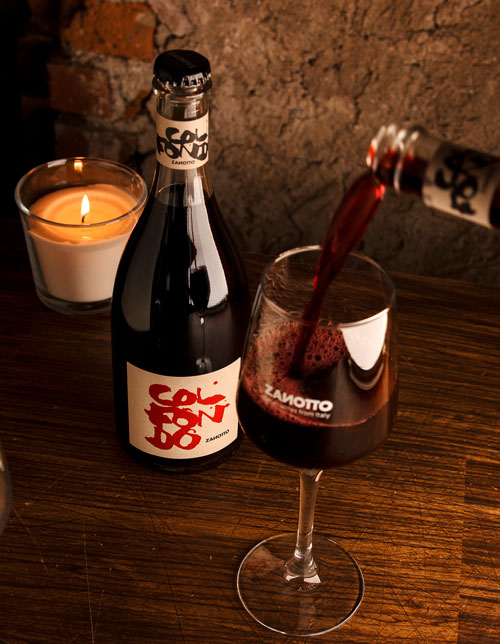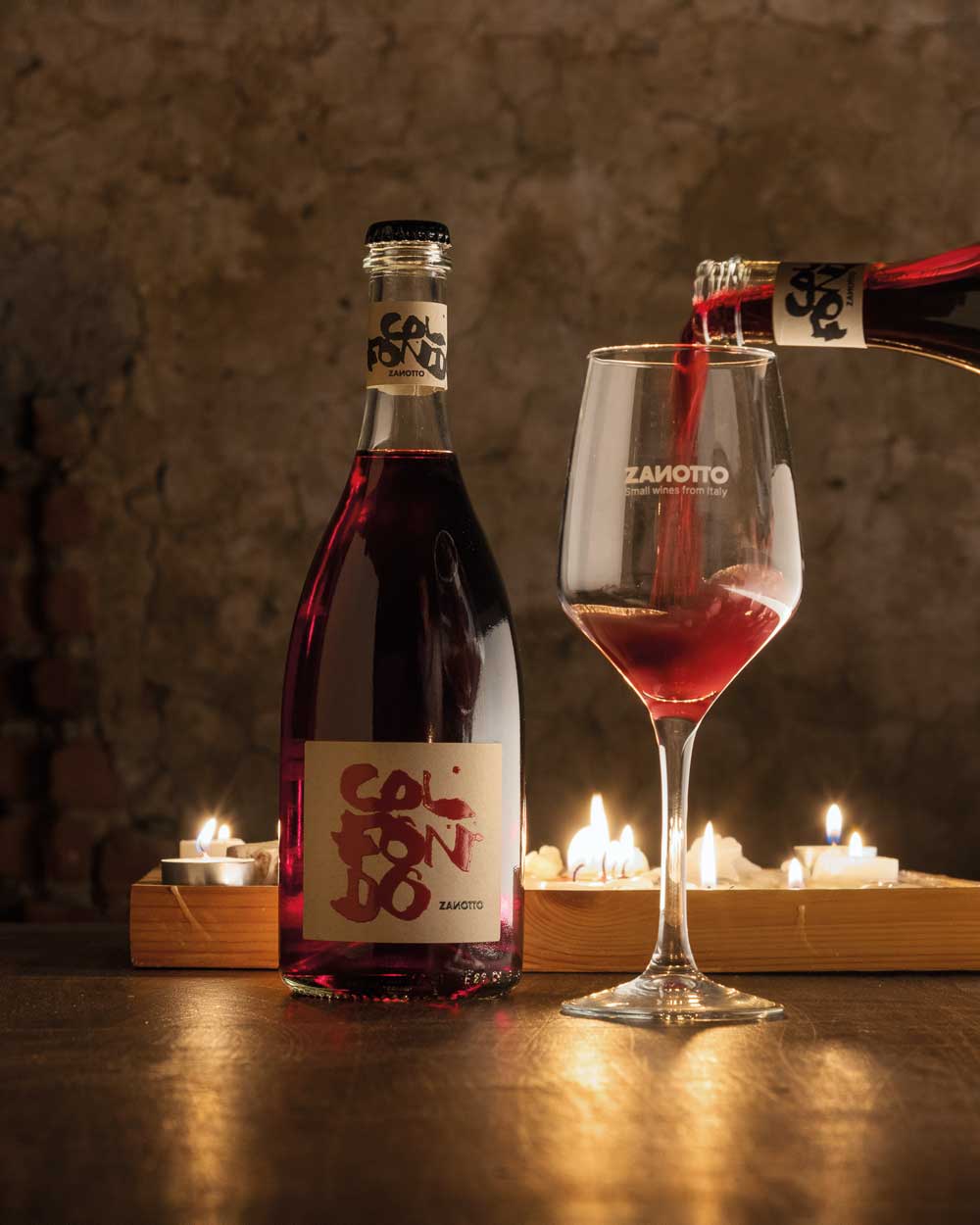Non sono presenti prodotti nel carrello.
Rosso Col Fondo
Lightly-sparkling red wine
Second fermentation in the bottle
Ancestral method, unfiltered
12% vol – 750 ml
Created from a blend of hill-grown red grapes with notable acidity, and another decidedly full-bodied grape. Grapes are fermented together and left to macerate in stainless steel tanks for 7-10 days.
The second fermentation takes place in the bottle where the lees are left to deposit.
The bouquet recalls, violets, small red fruit, strawberries and pepper. The tannins and acidity play it up lively in this unusual and unexpected wine, both harmonious and fragrant.
Serving Temperature: 10° – 12° C
To learn more:
Red Col Fondo: The Surprise You Didn’t Expect.
Unfiltered Wines by Riccardo Zanotto
Per saperne di più
Red Col Fondo: The Surprise You Didn’t Expect
“Col Fondo,” the ancient method of bottle-fermented sparkling wine aged on its lees, is synonymous with the crisp, genuine charm of whites—think Prosecco. But there’s a bolder, lesser-known twist: red “Col Fondo” wines. These unconventional reds don’t just add bubbles—they amplify the soul of native grape varieties with natural fizz and authentic character, far from the clichés of sweet, commercial sparkling reds.
A Tapestry of Grapes and Places
The world of red “Col Fondo” is rich and unexpected. Italy’s Lambrusco, with its violet foam and juicy fruit, leads the pack, but there’s more. In Piedmont, Barbera brings zesty acidity that dances with the bubbles, while Grignolino offers delicate cherry and spice notes. In Romagna, Sangiovese dons a rustic elegance, blending violet and earthy tones with fizz. Beyond Italy, Portugal’s Baga from Bairrada sometimes gets the “Col Fondo” treatment, yielding tart, wild-fruit reds, and even France’s Gamay in Beaujolais has been spotted in rare, fizzy, lees-aged versions. These experiments push tradition into thrilling territory.
Maceration: The Winemaker’s Signature
It all starts with maceration—when skins meet juice, shaping color, tannins, and aroma. There’s no one-size-fits-all: short macerations (2-4 days) craft light, ruby-hued wines with soft tannins and crisp red fruit, ideal for carefree sipping. Medium ones (5-10 days) build bolder structure and spiced layers while staying fresh. Longer soaks (over 10 days), though rare, produce robust reds with marked tannins and evolved notes of forest floor and leather—here, the second fermentation must be finely tuned to balance power and liveliness.
Refermentation: Nature’s Alchemy
The magic unfolds in the bottle. The base wine, not fully dry, is sealed with its native yeasts—sometimes a dash of fresh must or sugar—and ferments again. Slowly, carbon dioxide forms fine bubbles, while spent lees settle as the “fondo,” lending turbidity, bread-crust hints, and a creamy depth. It’s a raw, unfiltered nod to the past.
A Red Worth Exploring
Red “Col Fondo” wines are a hidden gem, far from the spotlight of mainstream sparklers. They hit you with energy: bubbles tickle the tongue, fruit bursts forth, and tannins—when present—either caress or playfully bite. A Lambrusco recalls a summer picnic, a Barbera a crisp sunset, a Sangiovese a lively dinner. Internationally, a fizzy Baga might surprise with its tart edge, a Gamay with its juicy charm. These reds break the mold, perfect for those craving authenticity and unbothered by a cloudy glass. They’re a vibrant sip where tradition meets rebellion—and a story worth tasting.




